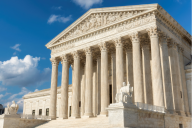You have /5 articles left.
Sign up for a free account or log in.
Last week, the Obama administration released an important report, “Not Alone,” addressing the daunting problem of sexual assault on college campuses.
The report was accompanied by an extensive set of helpful questions and answers to guide colleges and universities in compliance with Title IX of the Education Amendments of 1972, the law that provides the legal framework for oversight of how colleges and universities assure that all students are free from sexual harassment and assault. It was also accompanied by an advance summary of a systematic review of the literature on primary prevention strategies for reducing sexual violence conducted by the Centers for Disease Control and Prevention.
As a public health physician, I was surprised and disappointed that the word “alcohol” literally does not appear anywhere in the chapter on prevention. And in fact the word occurs only once in the text, in a section referring to future online technical assistance from the Justice Department.
To the administration’s credit, links to reports and guidance related to college drinking were included in the excellent, comprehensive “Not Alone” webpage and within the preliminary CDC report.
Studies suggest that at least half of all sexual assaults on college campuses involve the use of alcohol. I wonder if the administration chose to ignore in its report this important and common link in the chain of causal and correlated factors that often leads to sexual assault because officials were concerned that merely noting the association might lead to unfair blaming of the survivors of sexual assault when they have consumed alcohol or other drugs.
While I applaud the sensitivity to the tendency by some to wrongly blame survivors of sexual assaults when they have been drinking, omitting any discussion of the admittedly complicated issue was a serious mistake if we hope that the report prompts colleges and universities to use every possible avenue of intervention to prevent sexual assault on our campuses.
When the college that I lead began to address this issue, specialists in the prevention of sexual assault on college campuses were very blunt in their direction to us: They told us that we would never address the problem unless we also addressed the issue of excessive drinking. Our student leaders echoed that conclusion as they took a leading role in developing new initiatives to reduce sexual violence among our students. For example, our students suggested that we create an alcohol-free space where students can linger for food and conversation after parties end. This provides students with an opportunity to “disengage” from the party, as well as time that is helpful in making good decisions.
The omission in the report is especially surprising because the federal government’s own National Institute on Alcohol Abuse and Alcoholism, which I had the privilege of directing when I worked at the National Institutes of Health, has devoted significant resources to build the evidence base to help colleges reduce the human costs of excessive drinking on campuses. Many of these resources are readily available at www.collegedrinkingprevention.gov.
The inclusion of the word “first” in the title of the week’s report suggests that there will be other reports. I am optimistic that future reports that address sexual assault will take on the important and complicated issue of excessive drinking and drug use as one part of this deeply troubling issue.








